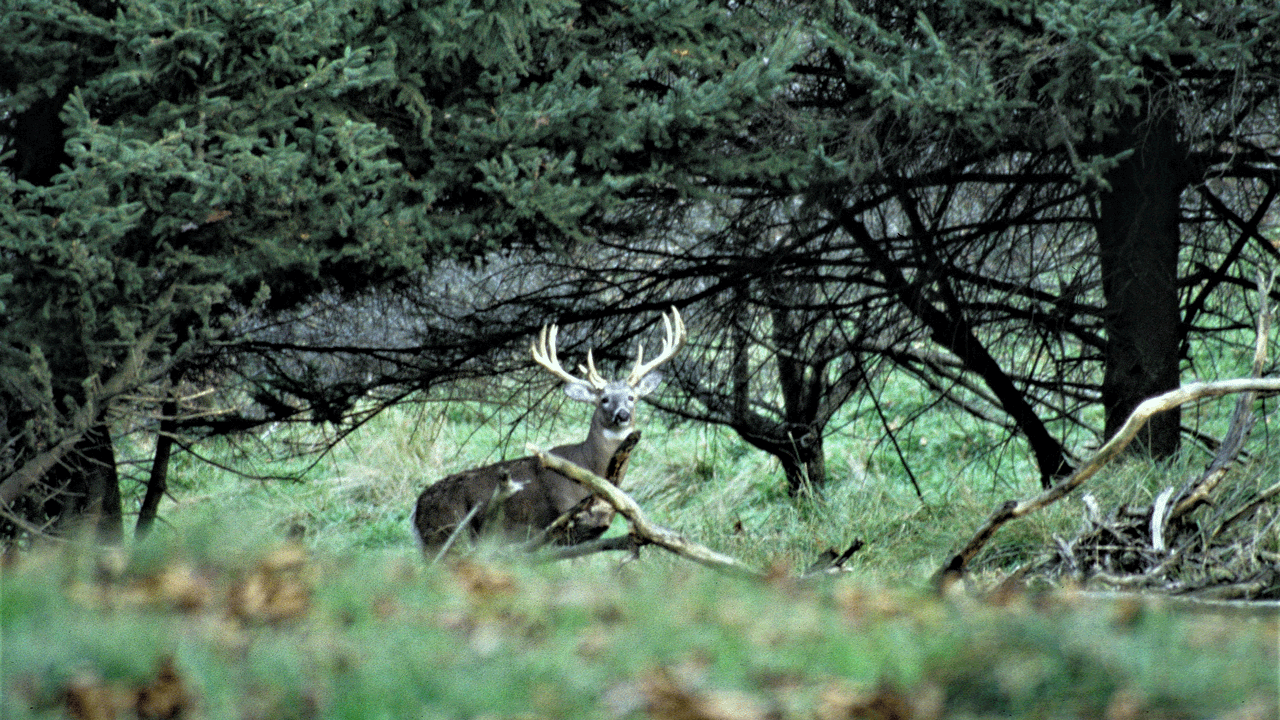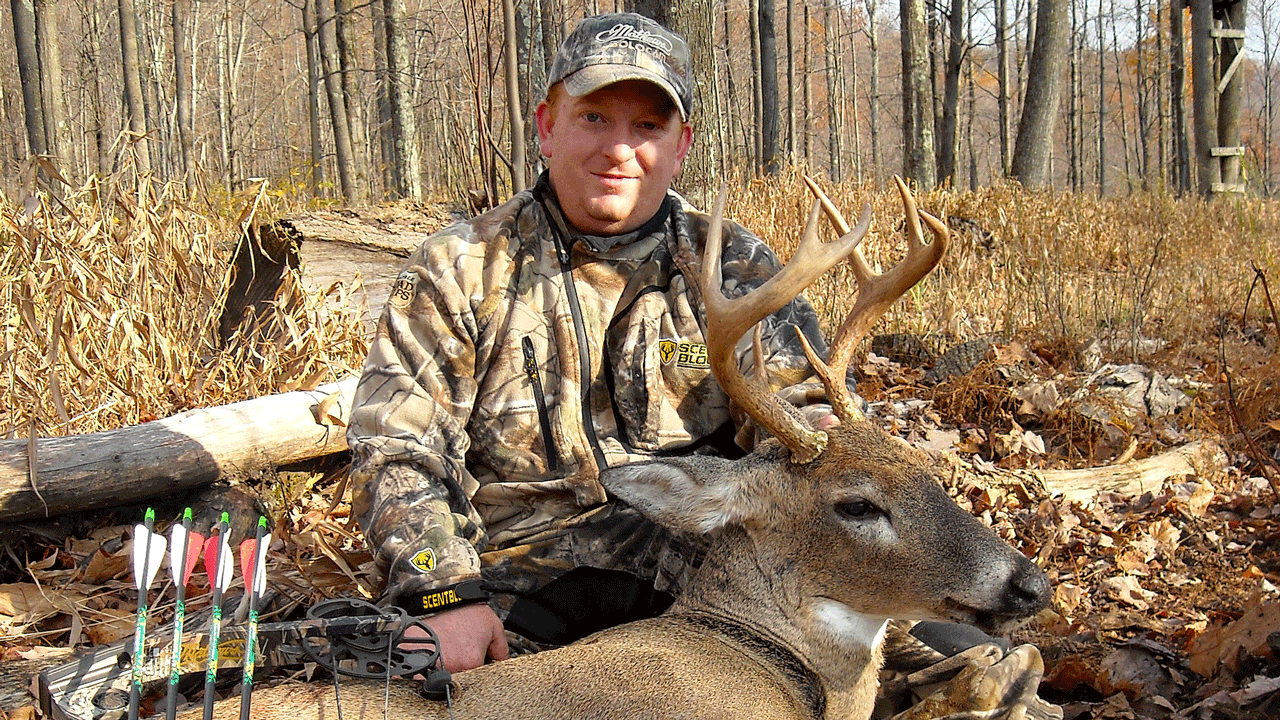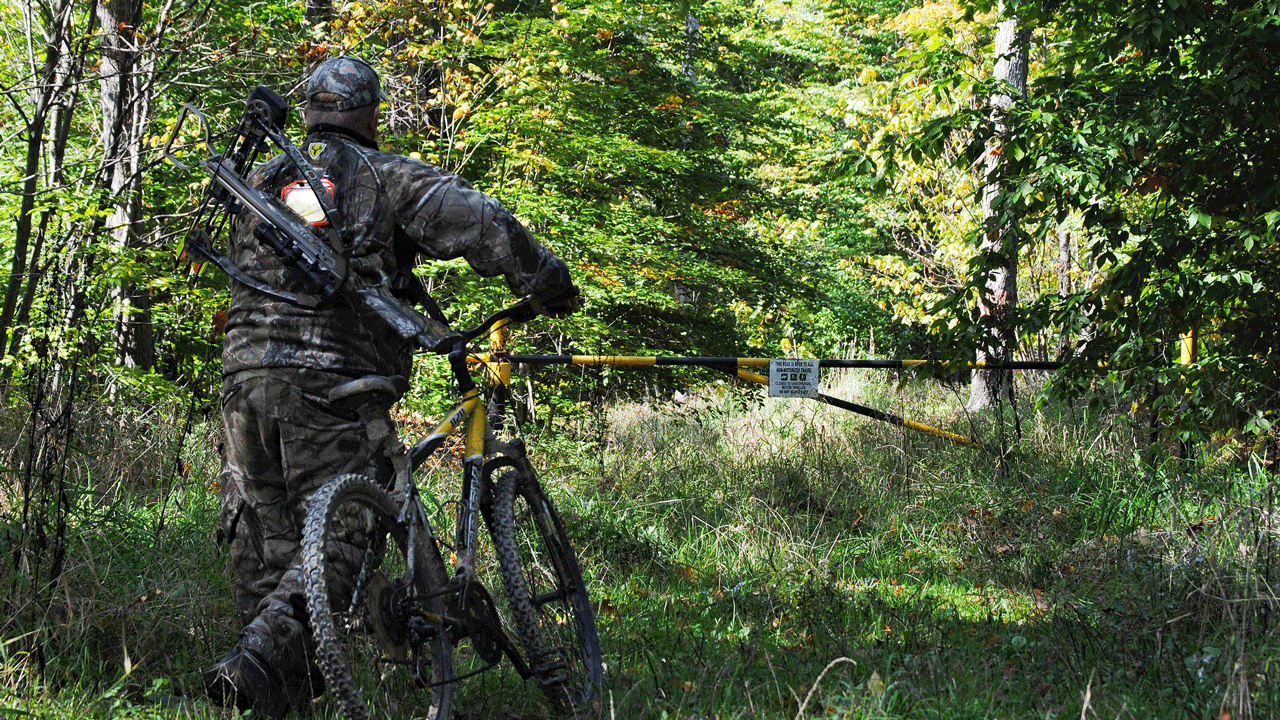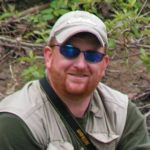It was mid-November and the rut was in full swing. Based on reports from friends and posts on social media, buck activity was peaking. However, as I climbed out of my stand after another morning with no deer sightings, all I could think was that maybe the bucks in my area hadn’t received the memo. Didn’t they know they were supposed to be chasing does hardcore all around my stand right now?
Instead of heading back to the truck, I decided to take a walk to look for fresh sign. I crossed a small ridge and dropped down into a brushy ravine. As I leaned against a tree trying to figure out where to go next, I heard leaves rustling behind me. A doe scampered through an opening 30 yards away. Right behind her was a nice 8-point. Neither of them knew I was there, and for the next five minutes, my heart pounded as the buck traveled in and out of shooting range but never stopped long enough to offer a shot.
Eventually they wandered off up over the ridge, but the experience got my adrenaline pumping. It proved that, as long as you’re in the woods, anything can happen. I spent the rest of the afternoon slipping in and out of thick areas where I knew deer liked to bed, stopping occasionally to make a few grunts or lightly rattle. Around three in the afternoon, a shooter buck came charging to the call. Although I didn’t get the deer (I swear that 3-inch sapling hopped up between us out of nowhere!), the experience reinforced a thought I’d had that morning: sometimes aggressive tactics work. Here’s a look at some run-n-gun bowhunting tactics for the rut that have proved effective over the years.

Run-n-gun bowhunting will open a whole new world to greater opportunities at a big buck.
Run-n-Gun Bowhunting
Running and gunning is a term typically associated with turkey hunting. Many turkey hunters listen for gobblers in the early morning light, and if they don’t hear anything, they keep moving until they do. The same concept can apply to deer hunting. If you’re in an area that seems void of activity, or if you’ve had a string of quiet mornings on stand, why not take a chance and try to make something happen?
Throughout the course of the season, certain food sources can dry up as new ones become available. Hunting pressure can cause deer to shift their patterns. Also, some bucks just prefer to rut in other areas than where you’ve had them on trail camera earlier in the season. Whatever the reason, if your hunting area seems suddenly void of deer, running and gunning can get you back on track and on their trail once again.
In my experience, running and gunning has been most effective when I’ve had a plan. I use aerial maps to locate potential beddings areas and natural funnels. I then figure out the quietest way to slip in and out of those areas undetected. I use grassy fields, tractor trails, woods roads, and open woods to move from spot to spot, and I try to travel where deer are least likely to bed during the day.
One of the biggest mistakes you can make while running and gunning is charge right into an area where you know there are deer. I prefer a more conservative approach, hunting along the fringes of known bedding areas rather than diving right in and potentially pushing deer out. Done right, running and gunning can be as subtle as it is aggressive and allow you to get close to deer without actually pressuring them. And if you can sneak within hearing range, then there’s always a possibility that you can call one in. This is the rut, after all, and if there’s a time when bucks are likely to respond to grunt calls and rattling antlers, it’s right now.

The author with a run-n-gun November buck.
Run-n-Gun Bowhunting – Setting Up Ambush
When running and gunning, I like to be mobile, which is why I leave the climbing treestand at home. Besides, many of the areas where this tactic is most effective (brushy draws, cuts, and thick bedding areas), lack trees big enough to safely climb anyway. Hunting on the ground means paying extra attention to wind direction and movement.
I always choose a location where I can huddle up against a tree, cluster of small trees, or brush pile that will help break up my outline. Before I even make my first call, I make sure I have a good range of motion without too much brush inhibiting me from drawing my bow. In many respects, a crossbow is the ideal tool for running and gunning because you can sit with your back against a tree and the bow, cocked and ready, resting on a set of shooting sticks in front of you.
On numerous occasions, I’ve no sooner sat down and made my first grunts and had a buck almost in my lap. More often than I care to admit, I wasn’t prepared for the immediate response and had to scramble to get into position.
I start with a few soft grunts first just in case there’s a buck in close that I can’t see. If I don’t get any response, I gradually increase the volume of my calls and rattling. I generally like to give every setup at least 45 minutes to an hour before moving on. It’s well-documented that rutting bucks move more during daylight hours. Waiting at least an hour gives multiple bucks the opportunity to pass within earshot of my calls.
Rutting bucks can show up anywhere, but most of them still prefer to stick to some sort of cover until dark. Many times, I’ve been able to slip in and set up on the edges of thick cuts where I knew bucks liked to stage during daylight hours and have had great success calling them into the open for a shot.
As an added bonus, bucks tend to cover wider ranges during the rut, which means deer from other properties can now be found on yours. These bucks are very susceptible to calling and rattling because they’re the newbies on the block and more likely to want to check out the local competition. Running and gunning is a great way to increase your odds of coming into contact with these deer.

The bike is a great option for silent run-n-gun bowhunting.
Run-n-Gun Bowhunting = Productive Scouting
I’ll admit, running and gunning is a low-percentage way to bowhunt whitetails. No matter how much ground you cover, or how many ambush locations you call and rattle from every day, deer will not respond every time out. But the same can also be said about hunting from a treestand. Success is often a result of continued practice and perseverance.
More than anything, I look at running and gunning as productive scouting. It allows me the opportunity to get a feel for where the most rutting activity is occurring right now while offering the possibility of killing a buck.
It’s also a great way to explore new territories mid-season. I have a camp in the mountains of Pennsylvania where there are many gated forest roads that lead back into some pretty remote country. One of my favorite things to do during the rut is ride my bike back on those roads, stopping periodically to grunt and rattle. In the process, I’ve covered more territory and found better stand locations than I would have if I’d chosen one spot and waited for the deer to come to me.
There’s also something to be said for the element of surprise. My first experience running and gunning came in November 2003 while hunting in West Virginia. I was a little down and out from not seeing many deer from my treestand. I was hunting the area for the first time and was having trouble figuring out the best locations to hang a stand, so one day I just decided to take off on foot with just my bow and my grunt call. I covered the entire property and called from at least a dozen different ambush spots that day. Finally, as evening approached, I set up in a little cove between two timbered areas and started grunting. Less than a minute later, I put an arrow through the lungs of a beautiful 8 point.
Running and gunning is a numbers game. It was back then and it still is today. The more locations I hit in a day, the more bucks are likely to hear my calls. And if more bucks are hearing my calls, I know I have a great chance that at least one of them will be interested enough to respond.

 By
By 



